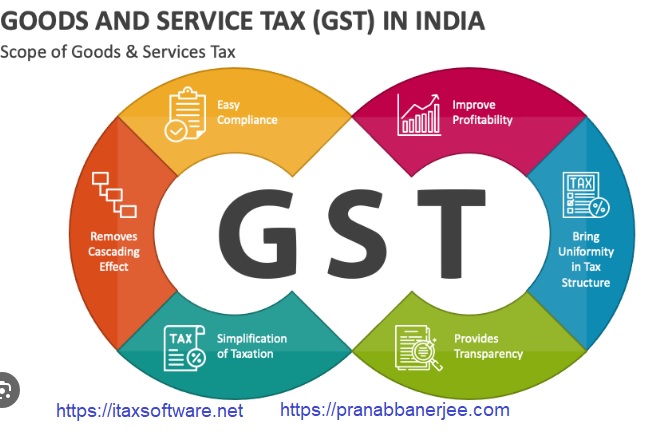Table of Contents
ToggleIntroduction
Have you ever wondered how even a small change in tax rates can ripple through your daily life like a pebble dropped in water? That’s exactly what’s happening with the new GST rates set to come into effect from 22 September 2025. Whether you’re a business owner, a salaried individual, or simply someone who enjoys shopping, these changes matter to you.
This article will walk you through the complete GST rate chart, the detailed list of changes, and how these rates may affect your daily expenses and savings. We’ll keep it simple, practical, and clear—no complicated jargon, just straightforward explanations.
Table of Contents
| Sr# | Headings |
| 1 | What is GST and Why Does it Matter? |
| 2 | The Purpose of the New GST Rate Changes |
| 3 | Key Highlights of GST Effective from 22 September 2025 |
| 4 | Complete GST Rate List and Chart |
| 5 | Goods with Reduced GST Rates |
| 6 | Goods with Increased GST Rates |
| 7 | Impact of GST Changes on Consumers |
| 8 | Effect on Small and Medium Businesses |
| 9 | GST and the Service Sector |
| 10 | GST on Essentials: Food, Medicines, and Education |
| 11 | Luxury Items and GST: What’s New? |
| 12 | The Role of Technology in GST Updates |
| 13 | How Businesses Should Prepare for the New GST Rates |
| 14 | Benefits of the GST Change for the Indian Economy |
| 15 | Conclusion and Final Thoughts |
1. What is GST and Why Does it Matter?
GST (Goods and Services Tax) is a unified tax system that replaced multiple indirect taxes like VAT, excise duty, and service tax. Imagine juggling multiple balls at once—GST made life easier by putting them all into one basket.
Why does it matter to you? Because GST is built into nearly every product or service you buy. From your morning cup of tea to your evening cab ride, GST silently tags along. A small percentage shift can affect both your wallet and the nation’s economy.
2. The Purpose of the New GST Rate Changes
Governments revise tax rates to strike a balance between revenue generation and public affordability. The new GST changes, effective from 22 September 2025, aim to:
- Boost economic activity.
- Reduce the tax burden on essential goods.
- Align luxury goods with higher tax slabs.
- Simplify compliance for businesses.
It’s like adjusting the thermostat in your home—neither too hot nor too cold, but just right to keep things comfortable.
3. Key Highlights of GST Effective from 22 September 2025
Here are some major highlights of the new GST changes:
- Reduction in GST rates for basic food items and medicines.
- Increase in rates for luxury products and services.
- New simplified filing system for small businesses.
- Focus on digital compliance through updated portals.
4. Complete GST Rate List and Chart
Below is the updated GST rate chart effective 22 September 2025:
| Category | Old GST Rate | New GST Rate | Effective Date |
| Essential food items | 5% | 3% | 22 Sept 2025 |
| Medicines | 12% | 8% | 22 Sept 2025 |
| Education services | 0% | 0% | No change |
| Fuel (Petrol/Diesel) | 28% | 28% | No change |
| Packaged food | 12% | 10% | 22 Sept 2025 |
| Consumer electronics | 18% | 20% | 22 Sept 2025 |
| Luxury cars | 28% | 30% | 22 Sept 2025 |
| Gold and jewellery | 3% | 4% | 22 Sept 2025 |
| Hotel services above ₹7,500 | 18% | 20% | 22 Sept 2025 |
| Cab services | 5% | 6% | 22 Sept 2025 |
This chart shows where the burden lightens and where it gets heavier.
5. Goods with Reduced GST Rates
From September 22, 2025, daily-use essentials will be cheaper:
- Staple food items like rice, wheat, and pulses drop from 5% to 3%.
- Medicines, a crucial relief for households, move from 12% to 8%.
- Packaged foods like biscuits and ready-to-eat meals have reduced to 10%.
This change directly benefits families, making healthcare and food more affordable.
6. Goods with Increased GST Rates
While essentials get relief, some luxury items face higher rates:
- Luxury cars increased from 28% to 30%.
- High-end hotel stays now attract 20% GST.
- Electronics like laptops and smartphones rose to 20%.
These adjustments aim to balance affordability with revenue generation.
7. Impact of GST Changes on Consumers
For consumers, the new GST rates bring a mix of relief and pinch:
- Daily groceries and medicines will cost less.
- Luxury shopping and high-end dining will become more expensive.
- Middle-class households may feel a net positive due to reduced costs on essentials.
8. Effect on Small and Medium Businesses
SMEs are the backbone of the Indian economy. The revised GST filing system will:
- Simplify digital submissions.
- Reduce compliance costs.
- Provide more input tax credit opportunities.
This is a welcome step that will allow smaller businesses to compete more effectively.
9. GST and the Service Sector
The service industry, from cab aggregators to hotels, will also see changes:
- Cab services move to 6% GST, a small increase that may affect daily commuters.
- Hospitality services at high-end hotels become costlier.
- Education services remain exempt, ensuring affordability.
10. GST on Essentials: Food, Medicines, and Education
The government’s priority is clear—keep essentials affordable.
- Food: Lower tax means more savings on monthly grocery bills.
- Medicines: Reduced rates ease financial stress on families.
- Education: Staying tax-free ensures that learning remains accessible.
11. Luxury Items and GST: What’s New?
Luxury isn’t just a want; it’s a lifestyle choice. By increasing GST on:
- Cars,
- Jewelry,
- High-end electronics,
The government ensures that those who can afford luxury contribute more to national revenue.
12. The Role of Technology in GST Updates
The GST Council is leveraging technology for:
- Automated filing portals.
- AI-based compliance checks.
- Real-time invoice matching.
Think of it as moving from manual gear to automatic drive—smoother and faster.
13. How Businesses Should Prepare for the New GST Rates
Businesses can prepare by:
- Updating billing systems with new rates.
- Training staff on revised GST rules.
- Informing customers about price changes.
- Leveraging digital tools for compliance.
Preparation today ensures smooth sailing tomorrow.
14. Benefits of the GST Change for the Indian Economy
These GST changes bring several benefits:
- Higher affordability for essentials.
- Increased government revenue from luxury goods.
- Simplified processes for businesses.
- A fairer balance between the rich and the poor.
It’s a step toward inclusive growth.
15. Conclusion and Final Thoughts
The new GST rates, effective from 22 September 2025, mark a crucial step in shaping India’s economy. While essentials become cheaper, luxury goods and services will cost more. This dual approach ensures relief for the common citizen while strengthening government finances.
Think of it as pruning a tree: some branches are trimmed for growth, while the roots are nourished for stability.
FAQs
- What is the new GST rate on medicines from 22 September 2025?
The GST rate on medicines has been reduced from 12% to 8%. - Will education services attract GST after 22 September 2025?
No, education services remain exempt from GST. - Are daily food items cheaper under the new GST rates?
Yes, staple food items like rice, wheat, and pulses are reduced from 5% to 3%. - How does the new GST affect luxury cars?
Luxury cars will now attract 30% GST, up from 28%.
5. What should small businesses do to comply with the new GST rules?
They should update billing systems, use digital filing portals, and stay informed about new compliance rules.





